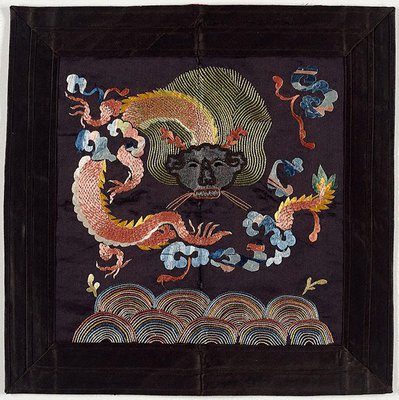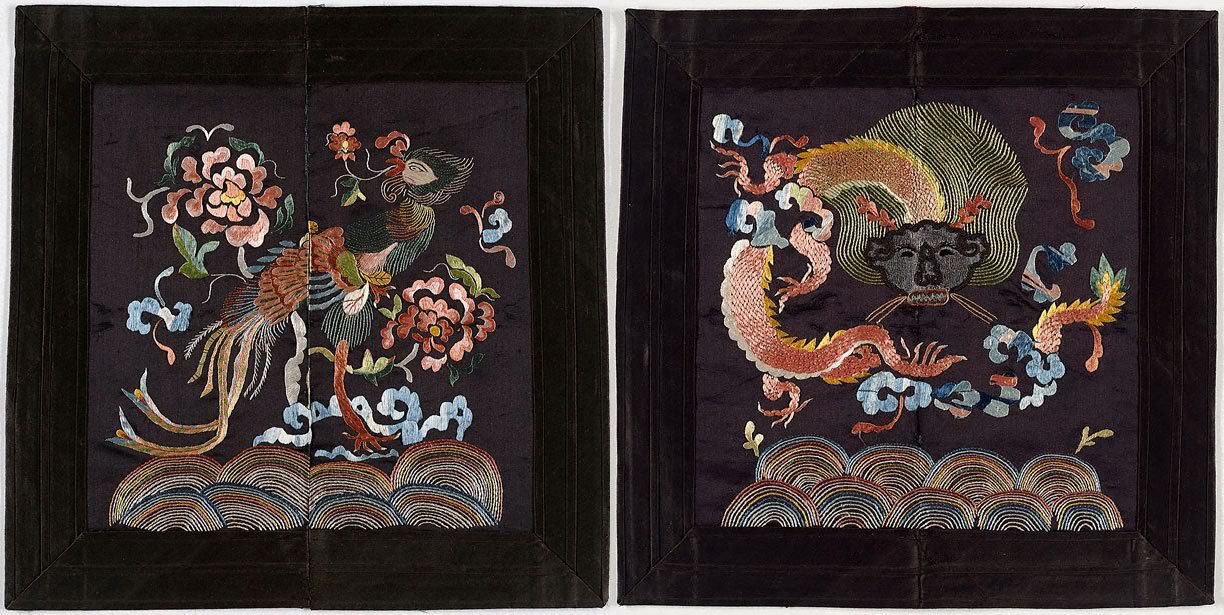

-
Details
- Date
- 20th century
- Media category
- Textile
- Materials used
- embroidered silk
- Dimensions
- 31.0 x 31.0 cm
- Credit
- Gift of Judith and Ken Rutherford 2006
- Location
- Not on display
- Accession number
- 301.2006.a-b
- Copyright
- Share
-
-
About
As far as is known, these two badges were usually worn by couples: female wore the phoenix and male wore the dragon. The phoenix is considered to be a symbol of virtue and peace in Vietnamese mythology and it is for this reason that queens used the phoenix as their principle emblem, while emperors used the dragon.
The front of one badge depicts a phoenix holding a floral sprig in the mouth standing on semi circular waves of the sea amidst floating clouds. Apparently, the phoenix body is a composite: the head symbolises the sky; the eyes, the sun and moon; the wings, the wind; feet, the earth; and the tail, the planets. In the early part of the 20th century women wore robes that were split down the front and the badge featuring the phoenix has a spilt at the front.
The dragon, a symbol of power and nobility in Vietnamese mythology, possesses the head of a camel, horns of a deer, eyes of a fish, body and neck of a snake, scales of a carp, claws of an eagle, and feet of a tiger. These qualities are present in the second badge that features a four clawed dragon indicating the badge would have once decorated the official dress of a high dignitary of the Royal Court. The official dress of the emperor was a five clawed dragon.
Asian Art Department, AGNSW, August 2011
